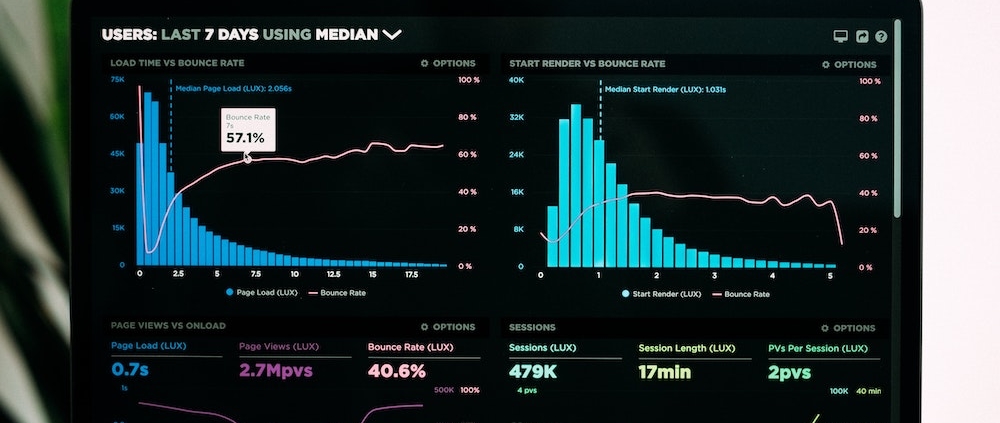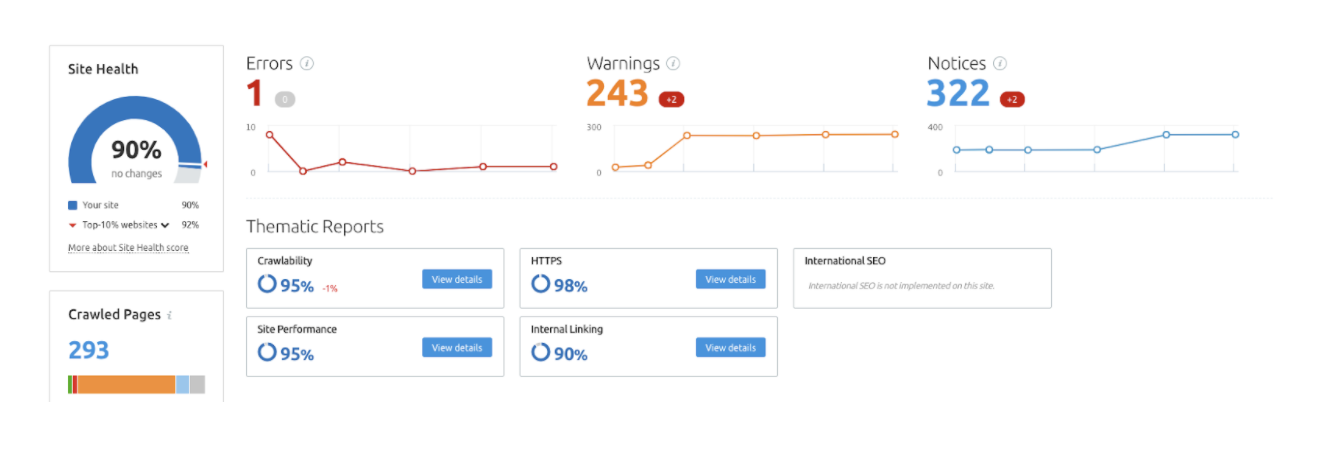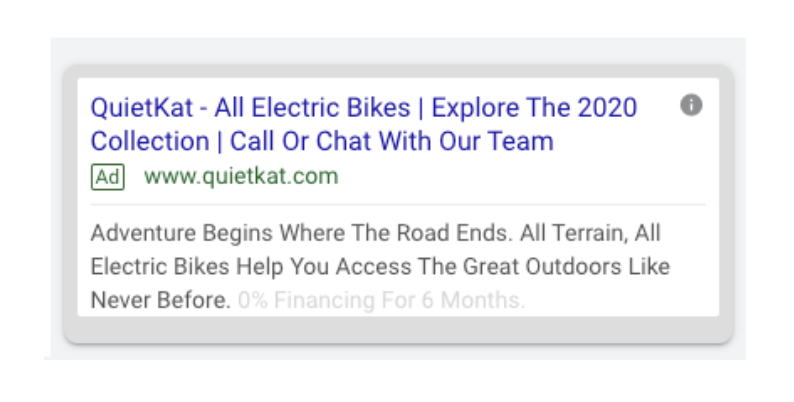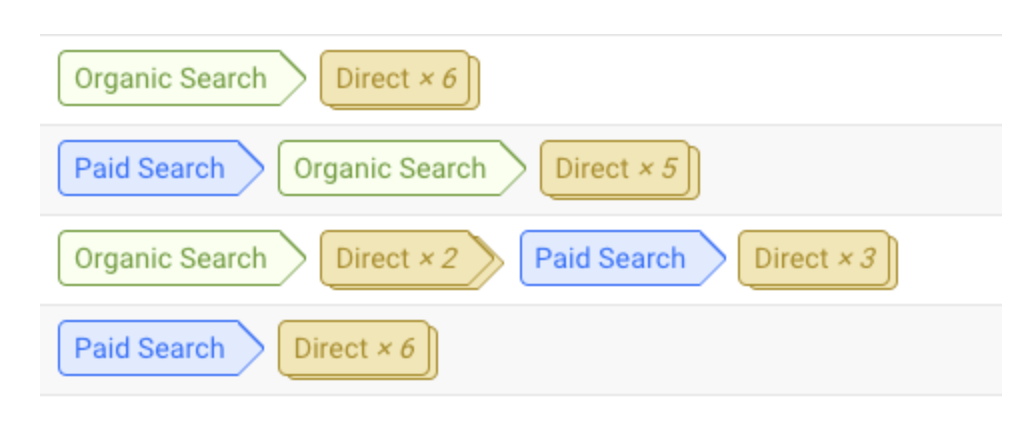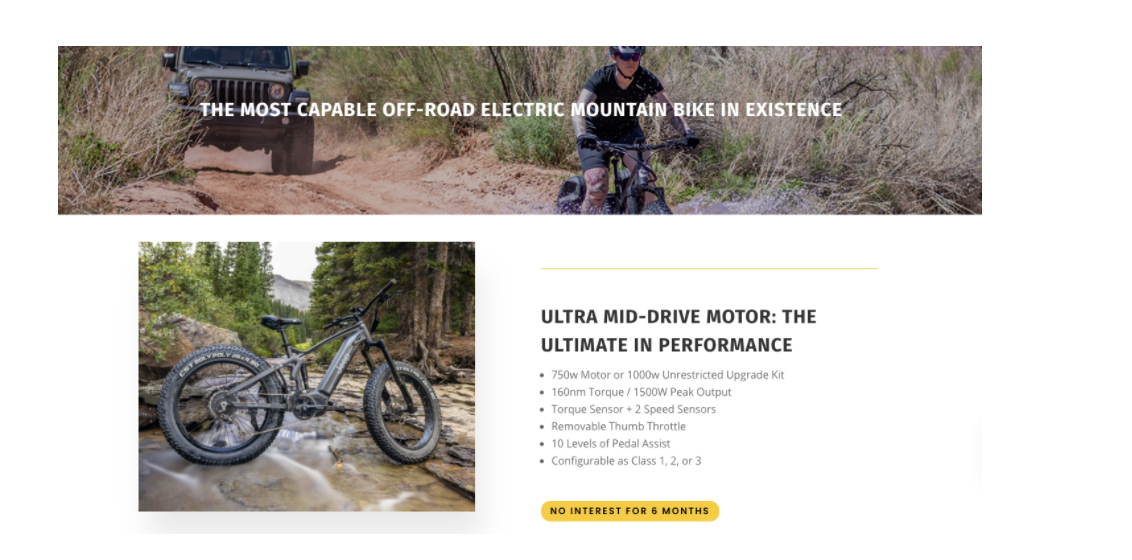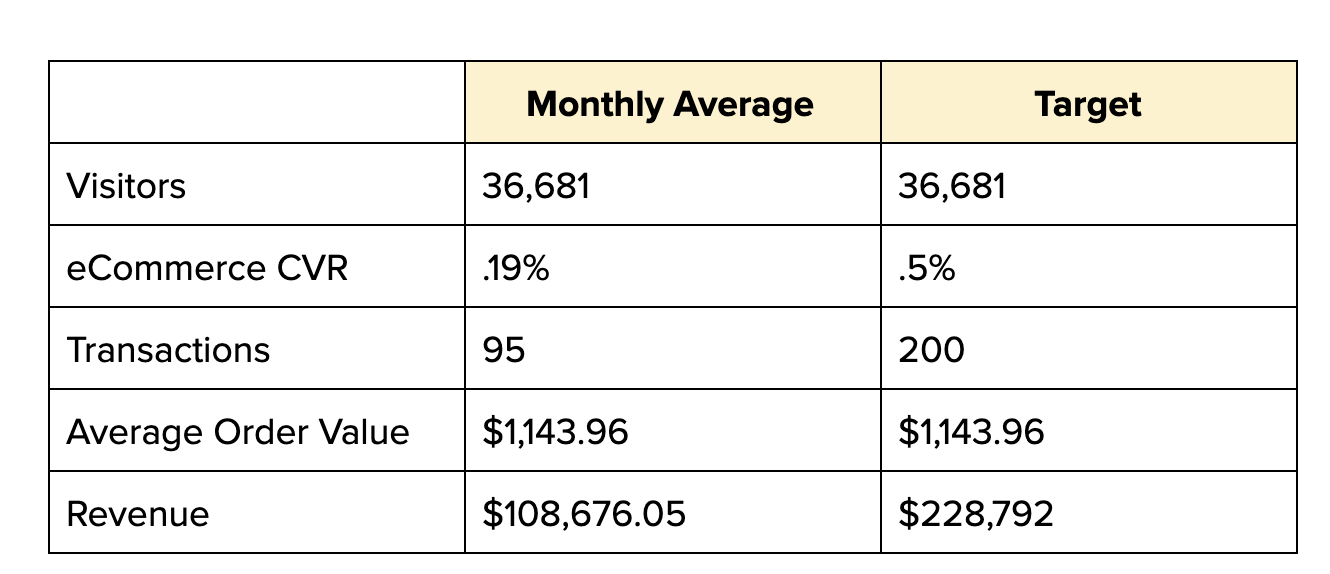Pairing Market Boom With an eCommerce Growth Strategy
When we think about a brand as a good fit for us at Tuff, we look to their current traction and historical growth. How’s their momentum currently and how have they been growing?
Based on the answers to these questions, we then think through whether our team will be helpful to them. Will our strength in Growth strategy specifically around services like Social Advertising, PPC, and SEO be channels that we can drive significant growth month over month?
In addition to larger growth marketing opportunities, we look to a brand’s success within their market as well as that market’s current growth. Is it an industry that is booming or stagnant? How does the brand’s offering work within that market and how is that market responding to them?
We then seek to pair external market forces with a growth strategy.
A great example of how we paired market boom with an incredibly smart growth strategy is from our partnership with QuietKat.
QuietKat is an electric bike retailer based out of Eagle, Colorado that sells direct-to-consumer, on Amazon, and through a network of large and mid-sized retailers including within the Cabelas and Bass Pro Shop network.
Unlike many electric bike brands within the cycling industry, QuietKat’s primary audience is not your typical urban commuter. Instead for the last few years, they’ve been carving out a place for themselves with a hunting and outdoorsmen space.
Turns out that electric bikes, in addition to hauling groceries and kids in an urban environment, are also ideal for backcountry hunting when outfitted with fat tire mountain bike tires and accessories.
Electric bikes are specifically good for hunters due to their quiet and stealthy approach (hence the name QuietKat) combined with new battery efficiency that gives riders the ability to go further for longer.
QuietKat came to Tuff to talk about growth in March 2020. Their success in the hunting space had propelled them to seek new audience growth within the Outdoor space.
As mentioned, before we bring on new partners, we do our research to make sure that specific clients are a good fit for Tuff. QuietKat was no different, we did our homework and spent time pouring over historical data, Electric Bike Industry insights, and projections for where the market was headed.
From our research, we found numerous opportunities for growth within QuietKat’s offering that would pair perfectly with Tuff’s Growth expertise. In addition, we learned that the E-Bike Market was in the midst of a Market BOOM. In short, while e-bikes had taken years to gain popularity outside of niche customer markets specifically for environmentally conscious buyers, the market had shifted sometime in the late 2010s and the mass opinion had decided that electric bikes were ‘in’ and were buying them quicker than brands could build them.
For example, during our research, we found that Rad Power Bikes, an urban commuter electric bike industry leader from Seattle, had one of their largest revenue-generating years in 2019 with over $100M in electric bikes and accessories sold. In 2020, following their successes in 2019, they’ve seen 300% revenue growth month over month.
Due to a pairing of market boom with growth strategy, QuietKat has also seen significant growth in 2020. Here’s how we were able to yield results with our growth strategy attached to a growing market.
We Made Our eCommerce SEO Strategy a Top Priority
We often find that organic is overlooked as a channel. Strategies for growing organic often get put somewhere at the bottom of the marketing strategy and harped on the least.
Don’t get us wrong, paid advertising is very exciting but in our opinion, brands with organic revenue making up the largest chunk of their overall revenue stand to do the best in the long run.
The simple fact is that it’s incredibly difficult as a brand to subsist on just paid growth. Typically, you need a pipeline of investment to help pay for that growth when costs increase or you need to scale.
With a strong organic revenue-producing strategy, you can build your own investment pipeline for the days when cost is high or turning up the scale is prime time.
But doesn’t an eCommerce SEO Strategy take years to actually start working?
Yes, it takes time (so does growing a brand), but you can start seeing results in 90-days or less should you know how to build on organic momentum through a tactic called SEO (Search Engine Optimization).
For QuietKat, we found that in 2019 Organic Traffic made up 40% of eCommerce revenue, the highest revenue-generating channel with the highest conversion rate in our analysis.
By making Organic Growth a priority we’ve been able to grow that channel. Currently organic makes up 60% of revenue for QuietKat.
We were able to grow organic with three main SEO tactic improvements.
1. Improving Site Health + Speed
When we first start working on improving the organic performance for our clients, we typically run an SEO Audit to determine whether we can start implementing organic revenue-driving strategies that will work with the current infrastructure. Two primary data points we look to when making this assessment are Site Health and Site speed.
Site health is based on the number of total errors and total warnings that are found on the pages crawled on your site. We typically feel comfortable implementing revenue-driving strategies when websites have a 90% or better score.
Another check we do is on site speed. We find that website’s with slower speeds perform at lower rates than ones with faster speeds. This impacts how organic traffic will perform on your website. We can spend lots of time developing revenue driving organic strategies but if the website infrastructure they land on isn’t ready to handle their needs then performance will suffer.
2. Improving Internal Linking
Once we’ve improved site health and speed, then we seek to improve the internal linking on your website. For QuietKat we made sure that every single page on their website linked to other content in a parent / child like structure.
We specifically worked on making sure that there were no dead-ends for the user and that the user always had a place to go that we wanted to rank. For example, they might start on a blog post and end on a landing page, because we had included a link to a collection page within the blog post that then pushed the user to checkout a product page.
3. Improving Product Optimization
Once we had improved internal linking for QuietKat then we worked on product optimization, which involves one of the most effective tasks you can do in eCommerce SEO – optimized product titles.
Product titles need to have clear and searchable titles that Google can easily index and rank. When titles are optimized, it’s more likely that user queries will trigger your organic content to be shown on search engine results.
In addition, we also optimize product descriptions, which helps with driving more organic traffic because there’s more content on the page to rank. High quality content in your product description will work in combination with your product title to help you show up higher in search results.
Developed a Strong PPC Strategy That Plays Nice With Social & Organic
PPC is one our favorite tactics at Tuff. It works really well by itself and can help bring websites extremely qualified traffic due to the fact that when done correctly brings in people already in the discovery phase of what you’re offering.
It’s also our favorite because it can work really well with social and organic.
One big issue that is often overlooked when thinking about Growth is how paid tactics work together individually and with organic. My hunch is that this is due to paid tactics usually being performance based. At Tuff we use performance data strategies to inform us on how tactics are working – a very common perspective to use in marketing.
Where we separate ourselves at Tuff is how we isolate those tactics’ performance and consider how those tactics are working with one another to advertise as a funnel. How are the paid tactics working in combination with a strong organic strategy? How are we informing users on a more impression-based model to consider our brand down the line?
Just looking at who saw our ads, clicked, and immediately converted is a poor way to judge an overall Growth Marketing Strategy, but it’s also a great way to determine if a particular ad campaign is performing at a high enough rate to warrant increased spend.
The secret is to utilize a balanced full-funnel approach to decide what channels serve as awareness or reminders and what channels attribute to the last click sale.
Understanding Audience Has Never Been More Important
Like many marketing strategies, audience understanding is key to success. For QuietKat, we spent a lot of time on both social and PPC refining our audiences. One of QuietKat’s objectives for us was to find new audiences outside of the hunting space. To do this, we worked off of hunters and found subsets of Outdoorsmen closely aligned with their primary audience that existed outside of the immediate audience.
To do this though, we tested the same creatives across platforms like Youtube, Google Display Network (GDN), Facebook, and Instagram.
We quickly learned that these top of the funnel placements would not yield immediate results and that we would need to look to longer conversion paths with multiple touchpoints.
We found that on average it took 7 touchpoints in a sequence to yield a conversion, but on the extremes, we saw 13 touchpoint highs and 1 touchpoint lows.
Understanding Multi-Channel Sales Paths
For QuietKat, our analysis found that due to the cost range of an electric bike by QuietKat ($2500 – $6500), we weren’t going to find one advertising channel that would definitively carry our sales. For higher priced items this is generally the case since the decision stage is inherently longer.
As explained above, we found on average that conversion required 7 touch points. This meant that customers were coming through to convert on a longer sequence that included our multiple channels from social to ppc to organic to direct.
For less expensive priced items, we might find that a single channel or two channels play a central role in assisting a conversion. For more expensive items, we’ve found that the buyer’s journey is longer and requires more touch points.
Having an independent strategy for each channel that worked together underneath our larger growth marketing strategy allowed us to increase overall eCommerce revenue by 88% since our partnership began in April 2020.
Focusing on eCommerce Conversion Rate Optimization
The final tactic that contributed to our partnership success has been a keen focus on eCommerce Website Conversion Rate Optimization (CRO). It’s such an important factor of a successful growth strategy, because you could have the best ad creative and copy, but without a solid conversion rate – your ads might never get the conversion they deserve.
One area of focus that applied to our overall eCommerce Converison rate was improving onsite navigation by developing a data-driven layout combined with our expertise for eCommerce to build a smart navigation header bar.
Our strategy helped increase eCommerce Conversion Rate by 26%, which led to over 100% increases in Revenue and Transactions.
Essentially, we were able to get more people to purchase by simply making it easier for them to find what they were looking to purchase.
By focusing on eCommerce Website CRO, we were also able to increase revenue without needing to increase ad spend budget or traffic.
This is possible because eCommerce CVR is directly tied to eCommerce Revenue. When eCommerce CVR goes up, revenue and transactions go up. See the chart above for reference. When we increase the eCommerce CVR to .5%, we see a direct increase in Transactions and Revenue without needing more traffic or an increase in average order value. Growth Marketing Strategy
Each Growth Marketing Strategy looks different for each brand we work with at Tuff. Not all the channels featured in this case study may work for any other brand. Let us take a deep dive into your brand and develop a strategy built for your business.
